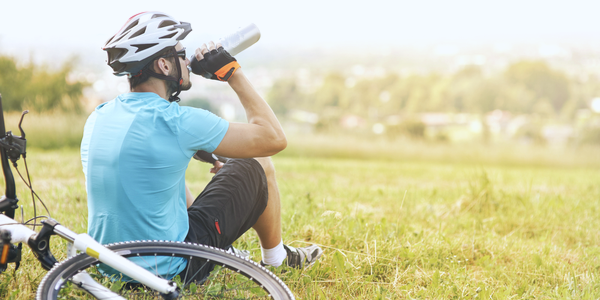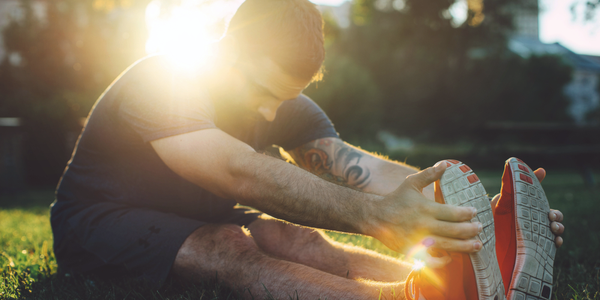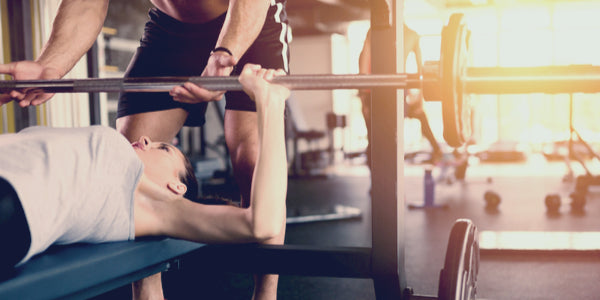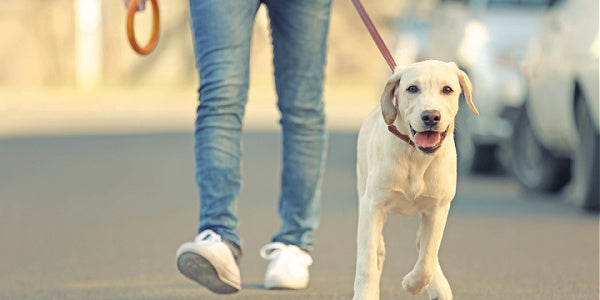
Exercising in the heat automatically elevates the intensity of any workout. Summertime heat raises the demands of the heart about 10 beats per minute more with every degree that internal body temperature rises. The heart not only beats faster and harder but can circulate two to four times as much blood per minute compared to a cool one.
Learn how to reduce body heat when the sun strikes and the best tips for hot weather safety.
How Does Heat Impact Exercise?
Heat mostly impacts the cardiovascular system when exercising. As mentioned, heat increases the workload of the heart and to a greater extent the hotter it is and the more intense the workout. But not only does the cardiovascular system work harder to fuel our muscles with oxygen and nutrients, but it also drives the mechanisms that help cool down the body.
The human body sheds heat through sweat and by radiating heat through flowing veins and arteries. While these are protective mechanisms, the first method presents further challenges because perspiring excretes sodium, potassium, and other minerals the body needs to contract muscles, communicate with the nervous system and maintain fluid balance.
The body attempts to minimize the loss of fluid and electrolytes, especially, but heat can trump its best intentions. When this happens, the risk of heat-related illness increases.
Also, note that heat often decreases exercise performance because the cardiovascular system is so taxed working on multiple functions at once that muscle tire more quickly. This is often why athletes perform worse on extra hot days.
(Fun fact – most running world records are set around 50-55°F! Not too cold and certainly not too hot.)
Heat-Related Illnesses
This type of illness occurs along a spectrum, beginning with mild symptoms and gradually or suddenly worsening if left untreated. Signs of heat-related illnesses and conditions include:
• Heat cramps, painful muscle contractions that feel like cramps; muscles feel firm to the touch. Body temperature can be normal but still elicit muscle pain and/or spasms.
• Heat syncope, also referred to as exercise-associated collapse, causes feelings of lightheadedness or fainting. Often occurs after long periods of standing (or exercising upright as in running, walking, etc.) or standing quickly after sitting for a while. Heat syncope can also happen when someone abruptly stops exercising such as after running a long race.
• Heat exhaustion, in which body temperature can rise as high as 104°F. Symptoms include cold and clammy skin, excessive sweating, fainting, headache, low blood pressure, nausea, vomiting, and general weakness. It can lead to heatstroke if left untreated.
• Heatstroke, a life-threatening emergency that occurs when the body rises above 104°F that requires immediate medical attention. Skin may be dry from lack of sweat or it can still be moist with symptoms of confusion, dizziness, extreme fatigue, fainting, headache, heart rhythm abnormalities, increased heart rate, irritability, nausea and vomiting, visual problems. At the worst end of the spectrum, heatstroke can cause brain damage, organ failure, or death.
Thankfully, one can prevent heat-related illnesses and methods to help quickly cool down if signs or symptoms of these conditions arise.
How To Reduce Body Heat In the Hot
Reducing internal body heat is the single most important task to accomplish if someone is experiencing any signs or symptoms of a heat-related illness. The quicker detected, the better the worse ends of the spectrum can be prevented.
Nonetheless, if someone progresses to heat syncope and passes out, seek immediate medical attention. It’s also smart not to exercise alone on extra hot days or to at least tell someone else where you’re exercising and when you expect to be back, should anything happen.
The best and quickest ways to cool down the body include the list detailed below.
1. Drink Cool, Hydrating Fluids
Cold water is best, but any water or hydrating fluid like a sports drink works. Avoid dehydrating fluids such as soda and anything with caffeine. Lemonade is a good choice if hypoglycemia is also a concern.
2. Apply Cooling Measures
Cool towels, ice, ice baths, a hose, cold foot baths, cool showers – whatever is available, apply to the skin. If a safe body of water is near and multiple other people can safely help immerse the person suffering, that works well too.
This is the quickest way to cool down body temperature after exercise and other hot weather conditions.
3. Move Into the Shade or Indoors
If possible, get out of the heat as quickly as possible. If not near air conditioning, at least move into the shade or another covered, cool place like under an umbrella or tree.
Moving indoors is the best choice.
4. Loosen Clothing
Remove all unnecessary clothing and sports equipment such as pads, jerseys, etc. Within appropriate reason, reduce clothing to the bare minimum and preferable cover the areas with cold towels or another cold water method.
5. Apply Aloe Vera
If increased body temperature is related to sunburn, applying aloe vera can cause a cooling effect.
Preventing Dehydration
Heat exhaustion and dehydration often go hand in hand. Dehydration increases the risk of developing heat exhaustion because it reduces blood volume and impacts electrolytes.
In fact, signs and symptoms of dehydration and heat exhaustion are nearly identical with the addition of bright or dark yellow, cloudy urine, and dry mouth. Prevent dehydration by:
• Drinking a glass of water upon waking up
• Drinking 1/2 your body weight in oz of water per day
• Drink more than average throughout the day on hot days
• Drink before you’re thirsty
• Consume isolated electrolytes in powdered forms if needed
• Eat hydrating foods like fruits and veggies and broths
• Drink additional hydrating drinks like sports drinks
Hot Weather Safety Tips
Safely beat the heat with these 10 tips, including avoiding tight-fitting clothes and drinking plenty of fluids, amongst the many.
1. Wear Light, Light Colored Clothing
Meaning, wear light colored clothing that reflects the sun and that isn’t too tight or constricting and pretty thin in nature. Sweat wicking clothing and fabric like cotton, linen, rayon, modal or silk are best and anything that indicates thermal regulation is adequate.
2. Wear Sunscreen
Avoiding sunburn also helps the body stay naturally cool. Opt for one with a SPF of 50 or above and one that’s waterproof so it stays on while exercising.
3. Exercise Outside the 10am-3pm Time Window
This is known for being the hottest time of day, so exercising before or after this window is smart.
4. Monitor the Temperature & Know Your Limits
It’s important to know how your body acts and performs in heat. Some people can naturally tolerate heat better than others, so get to know your body and understand how much heat you can handle before it becomes unsafe.
5. Get Acclimated Before Increasing Exercise Intensity
The body can slowly acclimate to exercising in the heat, which is why many professional athletes arrive at their competition destination weeks before their main event in the summertime.
Introducing the body to the heated weather conditions through short exposures helps the body become acquainted to performing in the heat better. Mimic this concept by exercising in heat for short amounts of time early in summer and gradually increasing to prepare for the dead heat during mid to late summer.
6. Bring Plenty of Hydrating Fluids
This is imperative to avoid dehydration, which can increase risk of heat related illnesses. Have a water bottle nearby or better yet, carry one with you while exercising and regularly sip on it even if thirst hasn’t struck yet.
Drinking before one senses thirst greatly helps prevent dehydration. Although quite uncommon, don’t drink excessive amounts of water, which can cause hyponatremia– the over-dilution of water compared to sodium levels.
7. Wear a Running Fanny Pack or Vest
Similar to the point above, bring a fanny pack or running vest to store small water bottles, sports beans, goos or gels, a sweat rag and phone, in case of emergency.
8. Bring Cool Rags Along
If a sweat towel doesn’t fit on your person while exercising, have cool rags or towels handy in a nearby car or other place, preferably stored in a cooler or insulated lunch pail.
Besides, these are soothing even when heat illness isn’t imminent after a workout!
9. Be Willing to Lower Exercise Intensity
Over stressing the body more by exercising too intensely in the heat increases risk of heat related illness. Therefore, be willing to lower the intensity when it’s extra hot outside.
Consider cutting back mileage; avoid sprinting or excessive plyometrics; keep heart rate below maximum; and generally put forth less effort. It will probably already feel like you’re exerting more effort in the hot heat anyways.
10. Workout Indoors
Finally, sometimes it’s simply not safe to exercise outdoors. If the heat index is greater than 90 degrees fahrenheit, proceed with extreme caution, especially if it’s also humid.
In fact, because humidity affects perspiration mechanisms, it poses equal if not worse environments for potential heat related illnesses. It’s better to be safe than sorry, so on extremely hot days, consider taking the workout indoors to prevent risks.
The Bottom Line
Many people feel increased motivation to exercise during the summer months thanks to lovely weather and a more optimistic atmosphere.
Nonetheless, the increased temperature and humid air conditions pose greater risks while exercising. Therefore, it’s important to understand how to work out safely in hot and humid heat. Staying hydrated drastically helps prevent heat related illnesses, and applying other hot weather safety tips like wearing light clothing, exercising in early morning or evening and carrying cool towels while exercising is smart.
If heat illness of any kind is suspected, take all safe measures to reduce body heat with cold, hydrating fluids, water submersion and seeking medical attention if necessary. Practicing all of the above makes exercising in the heat safe and more enjoyable!
References:
8 Tips for Working Out in the Heat. Penn Medicine. Published July 23, 2017. www.pennmedicine.org/updates/blogs/musculoskeletal-and-rheumatology/2017/july/tips-for-working-out-in-heat.
Cronkelton E. How to Reduce Body Heat Quickly and Get Relief. Healthline. Updated July 15, 2019. www.healthline.com/health/how-to-reduce-body-heat.
How Hot Weather Can Affect Your Heart When You Exercise. Cleveland Clinic. Published July 19, 2018. health.clevelandclinic.org/how-hot-weather-can-affect-your-heart-when-you-exercise/.
Mayo Clinic Staff. How to Keep Cool during Hot-Weather Exercise. Mayo Clinic. Published July 10, 2020. www.mayoclinic.org/healthy-lifestyle/fitness/in-depth/exercise/art-20048167.







